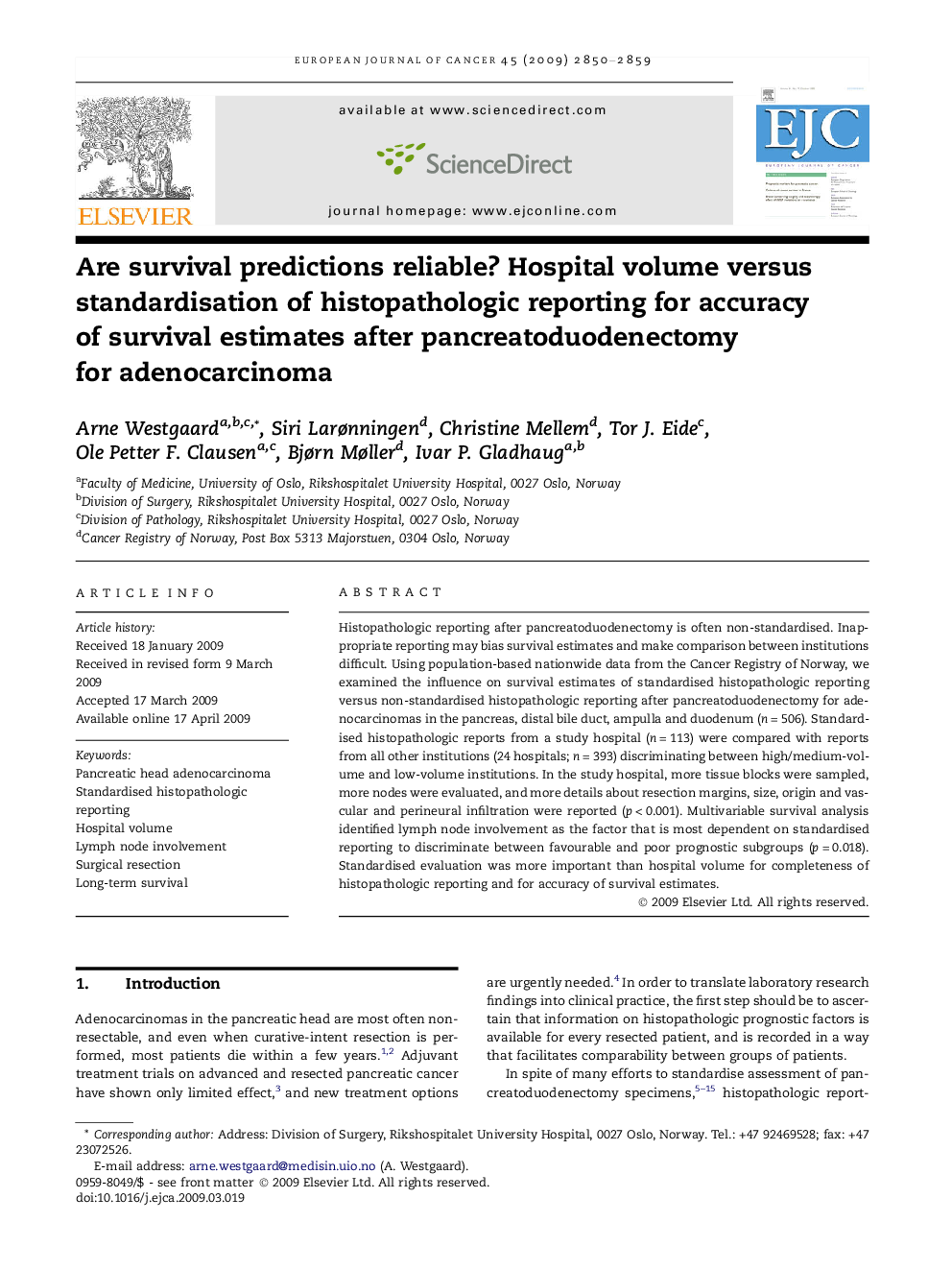| Article ID | Journal | Published Year | Pages | File Type |
|---|---|---|---|---|
| 2123599 | European Journal of Cancer | 2009 | 10 Pages |
Abstract
Histopathologic reporting after pancreatoduodenectomy is often non-standardised. Inappropriate reporting may bias survival estimates and make comparison between institutions difficult. Using population-based nationwide data from the Cancer Registry of Norway, we examined the influence on survival estimates of standardised histopathologic reporting versus non-standardised histopathologic reporting after pancreatoduodenectomy for adenocarcinomas in the pancreas, distal bile duct, ampulla and duodenum (n = 506). Standardised histopathologic reports from a study hospital (n = 113) were compared with reports from all other institutions (24 hospitals; n = 393) discriminating between high/medium-volume and low-volume institutions. In the study hospital, more tissue blocks were sampled, more nodes were evaluated, and more details about resection margins, size, origin and vascular and perineural infiltration were reported (p < 0.001). Multivariable survival analysis identified lymph node involvement as the factor that is most dependent on standardised reporting to discriminate between favourable and poor prognostic subgroups (p = 0.018). Standardised evaluation was more important than hospital volume for completeness of histopathologic reporting and for accuracy of survival estimates.
Related Topics
Life Sciences
Biochemistry, Genetics and Molecular Biology
Cancer Research
Authors
Arne Westgaard, Siri Larønningen, Christine Mellem, Tor J. Eide, Ole Petter F. Clausen, Bjørn Møller, Ivar P. Gladhaug,
